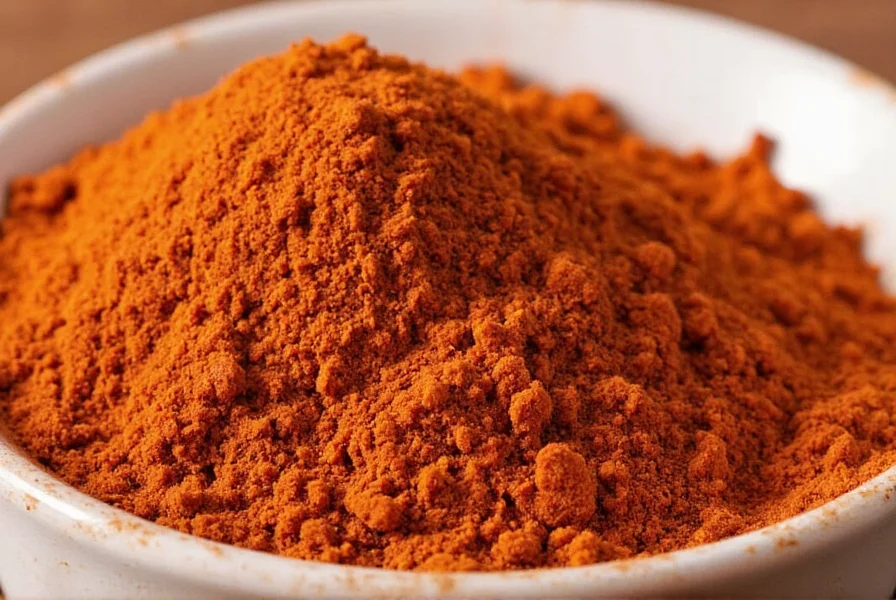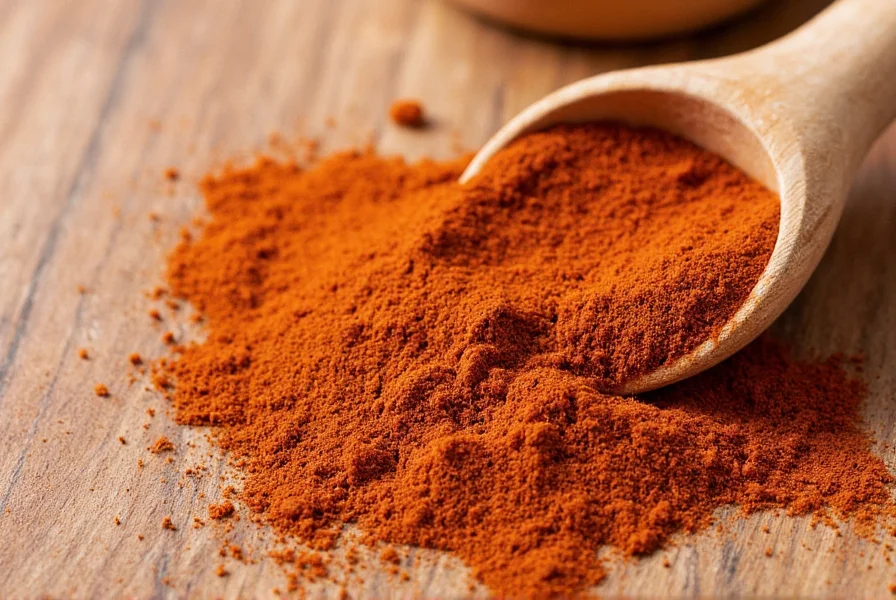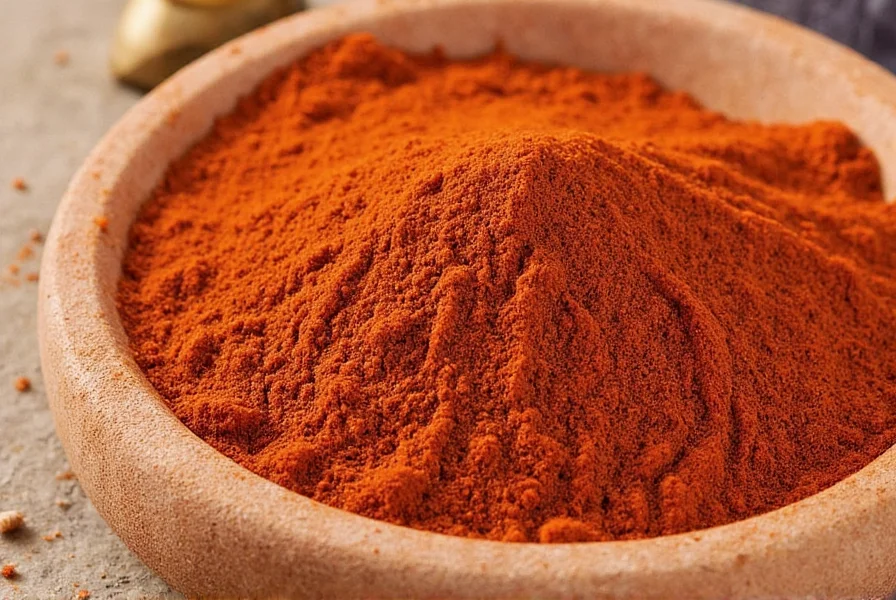When exploring is Cajun spice spicy, it's important to understand that this beloved Southern seasoning delivers heat differently than pure chili powders. Unlike single-ingredient spices, Cajun seasoning is a carefully balanced blend where spiciness plays just one role in an orchestra of flavors.
What Exactly Is Cajun Spice?
Cajun spice, also known as Cajun seasoning, originates from Louisiana's Acadiana region. This versatile dry rub typically contains between 8-12 different spices that create its distinctive flavor profile. While recipes vary by manufacturer and family tradition, most blends share common ingredients that contribute to both heat and depth of flavor.
Key Ingredients in Traditional Cajun Seasoning
| Ingredient | Flavor Contribution | Heat Level (Scoville) |
|---|---|---|
| Cayenne pepper | Primary heat source | 30,000-50,000 SHU |
| Paprika | Smoky sweetness | 0-500 SHU (sweet) or 500-1,000 SHU (hot) |
| Black pepper | Sharp, woody notes | 10,000-50,000 SHU |
| Garlic powder | Savory depth | 0 SHU |
| Onion powder | Sweet umami | 0 SHU |
| Oregano | Earthy herbal notes | 0 SHU |
Understanding the Heat Spectrum of Cajun Seasoning
The spiciness of Cajun seasoning exists on a spectrum. Commercial blends often indicate their heat level with terms like "mild," "medium," or "hot" on packaging. This variation primarily comes from the amount of cayenne pepper included:
- Mild Cajun seasoning typically contains 5-10% cayenne pepper
- Medium blends usually have 10-15% cayenne
- Hot versions can contain 15-25% or more cayenne pepper
When considering is Cajun spice the same as cayenne pepper, the answer is no—Cajun seasoning contains cayenne as just one component among many. Pure cayenne pepper measures between 30,000-50,000 Scoville Heat Units (SHU), while most Cajun blends range from 500-5,000 SHU depending on formulation.
Cajun vs. Creole Seasoning: Understanding the Heat Difference
Many people confuse Cajun and Creole seasonings, but they have distinct flavor profiles and heat levels:
- Cajun seasoning relies more on black pepper and cayenne for heat, with less emphasis on herbs
- Creole seasoning typically contains more herbs like oregano and thyme, with slightly less heat
This distinction matters when answering what makes Cajun spice spicy—the heat comes primarily from the cayenne and black pepper components, while Creole seasoning derives more flavor from its herbal elements.
Factors That Affect Cajun Spice Heat Level
Several elements influence how spicy your Cajun seasoning will taste:
- Brand variations: Commercial blends differ significantly in heat intensity
- Homemade recipes: Personal adjustments to cayenne content change heat dramatically
- Freshness: Older spices lose potency, reducing perceived heat
- Application method: How you use it affects perceived spiciness (dry rub vs. in sauce)

Using Cajun Spice According to Your Heat Preference
Understanding how hot is Cajun seasoning helps you use it effectively in cooking:
- For mild heat lovers: Start with 1/4 teaspoon per serving and adjust gradually
- For medium heat tolerance: 1/2 to 1 teaspoon typically provides balanced flavor
- For heat enthusiasts: Add incrementally up to 2 teaspoons or more per serving
Remember that cooking methods affect perceived heat—dry applications feel spicier than when incorporated into sauces or marinades. When exploring mild vs hot Cajun seasoning, consider that the other spices (paprika, garlic, onion) help balance the heat for a more complex experience than pure chili heat.
Common Misconceptions About Cajun Spice Heat
Several myths persist about Cajun seasoning's spiciness:
- Misconception: All Cajun seasoning is extremely hot
Reality: Many commercial blends offer mild versions specifically for those sensitive to heat - Misconception: Cajun spice is the same as red pepper flakes
Reality: Red pepper flakes provide pure heat, while Cajun seasoning offers layered flavors - Misconception: The spiciness comes only from cayenne
Reality: Black pepper and sometimes white pepper also contribute to the heat profile

Creating Your Perfect Heat Level
If commercial blends don't match your preference for cajun spice blend heat level, consider making your own. This gives you complete control over the spiciness:
- For milder versions: Reduce cayenne and increase paprika
- For hotter blends: Increase cayenne and add a pinch of cayenne extract
- For balanced heat: Maintain standard ratios but use fresher spices
When adjusting recipes, remember that the other ingredients in your dish (especially fats and acids) will affect how the heat registers on your palate. Dairy products, citrus, and sugar all help moderate perceived spiciness.
Final Thoughts on Cajun Spice Heat
So, is Cajun spice spicy? Yes, but not overwhelmingly so in most commercial blends. The beauty of Cajun seasoning lies in its balance—providing noticeable heat while delivering a complex flavor profile that enhances rather than overwhelms your dishes. Whether you're exploring traditional Louisiana cooking or simply looking to add depth to weeknight meals, understanding the heat dynamics of Cajun spice helps you use it effectively according to your personal taste preferences.
Is Cajun spice hotter than black pepper?
Cajun spice typically contains black pepper as one component among many, so it's not directly comparable. While black pepper provides sharp heat (10,000-50,000 SHU), Cajun seasoning blends usually range from 500-5,000 SHU overall because the heat is balanced with other spices. The cayenne in Cajun seasoning provides more direct heat than black pepper alone.
Can I make Cajun spice less spicy?
Yes, you can reduce the spiciness of Cajun seasoning by mixing it with additional paprika, garlic powder, or onion powder. For immediate heat reduction in a dish, add dairy (like yogurt or sour cream), acid (lemon juice or vinegar), or sugar. When making your own blend, simply reduce the cayenne pepper content to create a milder version that still maintains authentic flavor.
Why does my Cajun seasoning taste different from others?
Cajun seasoning recipes vary significantly between brands and regions. The heat level depends primarily on cayenne pepper content, but other factors include the ratio of black to white pepper, freshness of ingredients, and additional components like celery salt or thyme. Commercial blends often adjust heat levels for broader consumer appeal, while traditional Louisiana recipes tend to be spicier.
Does Cajun spice get hotter when cooked?
No, Cajun spice doesn't actually get hotter when cooked—the capsaicin (heat compound) remains relatively stable. However, cooking can release more volatile compounds that enhance the perception of heat initially. As dishes continue cooking, especially in liquid-based recipes, the heat often mellowes and integrates with other flavors. Dry applications (like rubs) maintain more consistent heat throughout cooking.
How can I tell if Cajun seasoning has gone bad?
Expired Cajun seasoning loses potency and flavor. Signs include faded color, diminished aroma, and reduced heat. Properly stored in an airtight container away from light and heat, Cajun seasoning maintains quality for 1-2 years. If it no longer produces the characteristic warmth when tasted (even in small amounts), it's time to replace it. Note that expired seasoning won't make you sick but won't deliver the intended flavor profile.
Frequently Asked Questions
Is Cajun spice hotter than black pepper?
Cajun spice typically contains black pepper as one component among many, so it's not directly comparable. While black pepper provides sharp heat (10,000-50,000 SHU), Cajun seasoning blends usually range from 500-5,000 SHU overall because the heat is balanced with other spices. The cayenne in Cajun seasoning provides more direct heat than black pepper alone.
Can I make Cajun spice less spicy?
Yes, you can reduce the spiciness of Cajun seasoning by mixing it with additional paprika, garlic powder, or onion powder. For immediate heat reduction in a dish, add dairy (like yogurt or sour cream), acid (lemon juice or vinegar), or sugar. When making your own blend, simply reduce the cayenne pepper content to create a milder version that still maintains authentic flavor.
Why does my Cajun seasoning taste different from others?
Cajun seasoning recipes vary significantly between brands and regions. The heat level depends primarily on cayenne pepper content, but other factors include the ratio of black to white pepper, freshness of ingredients, and additional components like celery salt or thyme. Commercial blends often adjust heat levels for broader consumer appeal, while traditional Louisiana recipes tend to be spicier.
Does Cajun spice get hotter when cooked?
No, Cajun spice doesn't actually get hotter when cooked—the capsaicin (heat compound) remains relatively stable. However, cooking can release more volatile compounds that enhance the perception of heat initially. As dishes continue cooking, especially in liquid-based recipes, the heat often mellowes and integrates with other flavors. Dry applications (like rubs) maintain more consistent heat throughout cooking.
How can I tell if Cajun seasoning has gone bad?
Expired Cajun seasoning loses potency and flavor. Signs include faded color, diminished aroma, and reduced heat. Properly stored in an airtight container away from light and heat, Cajun seasoning maintains quality for 1-2 years. If it no longer produces the characteristic warmth when tasted (even in small amounts), it's time to replace it. Note that expired seasoning won't make you sick but won't deliver the intended flavor profile.











 浙公网安备
33010002000092号
浙公网安备
33010002000092号 浙B2-20120091-4
浙B2-20120091-4